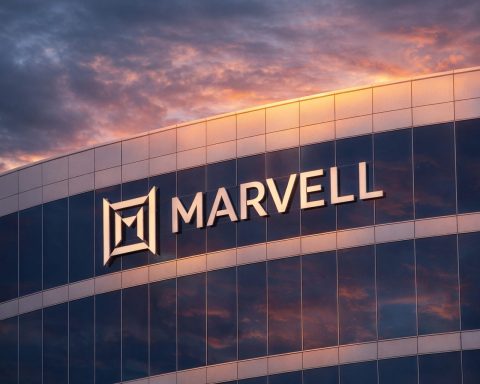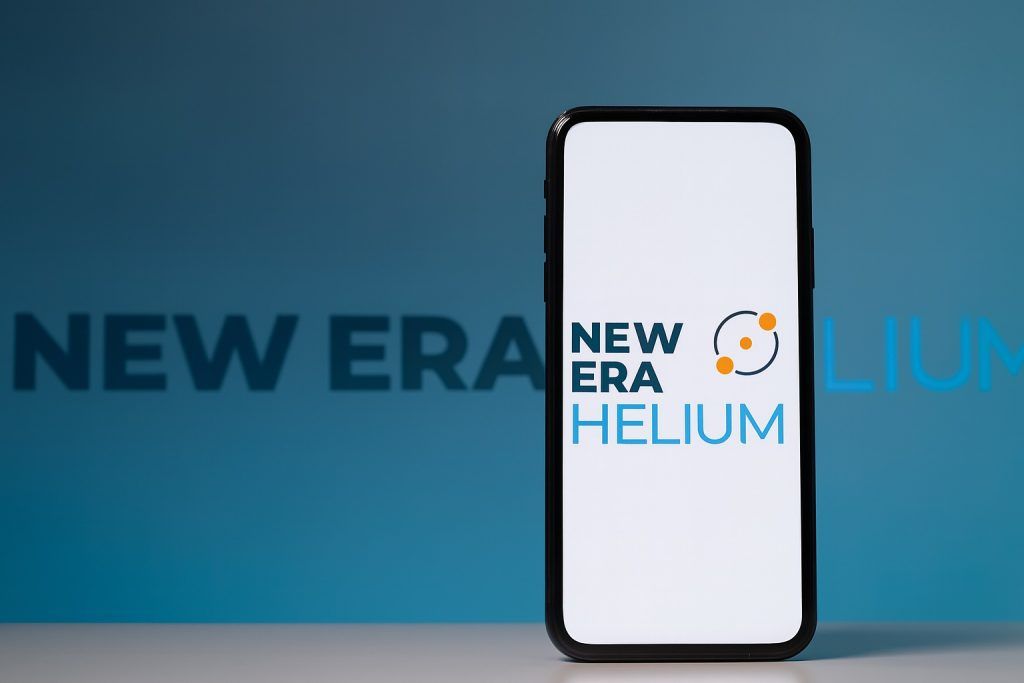- Shares Surge: MNMD hit a 52-week high of about $13.09 on Oct. 14 and traded around $13.65 on Oct. 17 [1] [2], a gain of roughly +68% year-to-date.
- Clinical Breakthrough: The lead drug MM120 (an LSD-derived therapy) delivered 48% remission and 65% response rates at 12 weeks in a Phase 2b anxiety trial [3]. The FDA granted MM120 Breakthrough Therapy status for generalized anxiety disorder (GAD) [4].
- Phase 3 Program: MindMed is running three pivotal Phase 3 studies of MM120 (two in GAD, one in major depressive disorder) with topline readouts expected in 2026 [5] [6].
- Financial Health: The company held $237.9 million cash (mid-2025) – funding operations into 2027 [7]. A new CFO (Brandi Roberts) has joined, and enrollment in all three Phase 3 trials is on track [8].
- Analyst Outlook: Analysts are increasingly bullish. Most rate MNMD as a “Moderate Buy” and the average 12‑month target is ~$27–$28 (roughly double today’s price) [9]. Needham & Co. initiated coverage with a Buy rating and $28 target, calling MM120 “the most advanced psychedelic in development for GAD” [10].
- Sector Context: Psychedelic medicine is heating up. Big Pharma just paid $1.2B for a psychedelic depression drug [11]. Competitors like Compass Pathways (psilocybin for depression) also reported positive Phase 3 data [12], while others (like Lykos) have faced setbacks. Experts say MindMed’s data and trial design now put it among the front-runners in the space [13] [14].
Stock Soars on Catalyst News
MindMed’s stock has skyrocketed in recent weeks. After languishing in the single digits, MNMD climbed above $12 in late September and spiked to $13.09 on Oct. 14, its highest level in over a year [15] [16]. The surge has pushed the stock roughly +68% year-to-date [17]. Heavy trading volume accompanied the rise, as investors reacted to the latest clinical and regulatory news. (By Oct 17, shares were trading around $13.60 [18].)
This rally has made MindMed one of the year’s best-performing small-cap biotechs. Wall Street sentiment is strongly positive: MarketBeat notes MNMD has seven analyst ratings (6 Buy, 1 Sell) with a consensus Moderate Buy recommendation and an average 12-month target around $27.8 [19] [20] (about 120% above recent levels). Notably, Needham & Co. initiated coverage in mid-October with a Strong Buy view and a $28 target [21]. In short, analysts see vast upside if MindMed’s trials succeed. “One analyst has a Strong Buy, six have Buy, and one has Sell… with an average target of $27.83,” notes MarketBeat [22].
The stock’s recent volatility is not unusual for a clinical-stage biotech. After this week’s peak, shares gave back a few percentage points on Oct. 16 (likely due to profit-taking) [23]. Even insiders have taken modest profits: CEO Robert Barrow sold about 25,800 shares in late September (at ~$9.77) [24] [25]. Still, overall sentiment remains upbeat as MindMed heads toward its next major catalysts in 2026.
Breakthrough LSD Therapy Drives Optimism
The key driver behind this market excitement is MindMed’s clinical progress. Its lead candidate, MM120, is a novel formulation of LSD (lysergide) engineered for medical use. Phase 2b trial results, announced in late 2023 and 2024, were highly promising. In a randomized study of ~198 patients with moderate-to-severe generalized anxiety disorder (GAD), a single 100 µg dose of MM120 produced rapid and durable relief. By 12 weeks, 48% of patients on MM120 were in clinical remission (versus ~50% on placebo), and 65% had at least 50% symptom reduction [26] [27]. These effects were sustained with a single dose – a result that experts find remarkable. As one investigator Dr. David Feifel put it, “MM120 exhibited rapid and robust efficacy, solidly sustained for 12 weeks after a single dose, [which] is truly remarkable” [28].
Based on these data and the clear unmet need in GAD (no new drug approvals in nearly 20 years), the FDA granted MM120 a Breakthrough Therapy designation in March 2024 [29]. In announcing this, the company highlighted that MM120 met key secondary endpoints and showed “clinically and statistically significant durability of activity” through 12 weeks [30]. CEO Rob Barrow said the breakthrough status “provides further validation of the important potential role this treatment can play” for GAD patients [31].
Building on the Phase 2 success, MindMed has launched three pivotal Phase 3 trials of MM120 (an oral-dissolving tablet) – two in GAD (studies named Voyage and Panorama) and one in major depressive disorder (Emerge) [32] [33]. According to Barrow, enrollment is strong and on schedule. “We continue making significant progress across all three of our pivotal Phase 3 trials… We remain on track to report topline data from our Phase 3 Voyage trial in the first half of 2026, followed by Panorama and Emerge in the second half” [34]. MindMed also plans a second registrational trial in depression (details to come).
CMO Daniel Karlin notes that MindMed’s careful trial design – single-dose LSD vs. placebo, with blinded sub-therapeutic dosing – avoids pitfalls seen by others. He explained that regulatory feedback (after a competitor’s MDMA failure) actually validated MindMed’s approach: “Everything FDA said they needed to see from Lykos are things we baked into our program from the outset,” Karlin said [35]. In fact, Karlin reported that MindMed has already started all three Phase 3 studies of MM120. “Two of those phase 3 studies are in GAD, and one… is in MDD,” with GAD readouts expected in H1 and H2 2026 and MDD data also in late 2026 [36]. “We’re very quickly moving toward confirmatory phase 3 data that would ultimately enable a submission to FDA for potential approval,” he said [37].
Financials and Pipeline
On the corporate side, MindMed reported its Q2 2025 results on July 31, 2025. The company had $237.9 million in cash and short-term investments as of June 30, 2025 [38], down slightly from $245.5M in March. Management says this provides runway into 2027, well beyond the first Phase 3 readouts [39]. R&D spending is ramping up (nearly $30M in Q2 vs. $14.6M a year earlier [40]) to support the trials. Net loss widened to $42.7M for Q2 2025 [41], reflecting the higher trial costs and some one-time items, but this was expected as the company accelerates development.
MindMed is also expanding beyond GAD/MDD. An early-stage candidate MM402 (an R(–)-MDMA analog) completed a Phase 1 study in healthy volunteers earlier this year [42], and future studies are planned to explore its use in autism spectrum disorder. These pipeline moves underscore that MindMed is applying psychedelic science to multiple brain health areas.
The company has also beefed up its team. In May 2025 MindMed appointed Brandi Roberts as Chief Financial Officer, bringing decades of biotech finance experience [43]. CEO Barrow notes that with the regulatory pathway defined and a “strong balance sheet”, MindMed is “well-positioned to advance MM120 as a potential best-in-class therapeutic option” for anxiety and depression [44].
Analyst Commentary & Price Targets
Financial analysts are upbeat on MindMed’s outlook. As noted, the consensus among seven analysts is moderate buy/strong buy, with price targets roughly twice today’s levels [45] [46]. For example, Needham’s $28 target implies ~120% upside [47], and Oppenheimer has set a $25 target (about +85%). MarketBeat recently summarized that Wall Street sees “significant room for the stock to run further if the company executes well” [48].
These bullish views reflect the belief that MM120 could outperform standard treatments by a wide margin. Analysts note that current anxiety drugs only work for about half of patients and often require daily dosing, whereas MM120’s single-dose regimen produced unusually high response and remission rates [49] [50]. With pivotal trials nearing completion, many investors are treating MNMD like a potential hit-or-miss biotech: the upside is huge if trials succeed.
Not all forecasts have doubled the stock, but even more conservative models point to major gains. A StockAnalysis consensus (7 analysts) rates MNMD a “Strong Buy” with an average target around $26.7 (+96%) [51]. In mid-2025, Oppenheimer and Chardan Capital also issued buy recommendations with $25–$28 targets. In short, virtually every recent analyst opinion anticipates substantially higher prices from current levels.
Competing in a Psychedelic Renaissance
MindMed’s rise comes amid a broader resurgence in psychedelic medicine. Big Pharma is re-entering the space after previous caution. AbbVie, for instance, announced in August 2025 that it would pay $1.2 billion to acquire Gilgamesh Pharmaceuticals’ psychedelic depression drug candidate [52], signaling faith that these therapies could succeed. (Johnson & Johnson’s Spravato, an esketamine treatment, is already a blockbuster.)
At the same time, public biotech peers have had mixed results. Compass Pathways (NASDAQ: CMPS) recently reported that its Phase 3 trial of psilocybin for treatment-resistant depression “hit its primary endpoint” [53] – a sign that the science can work. By contrast, Lykos Therapeutics’ MDMA drug was rejected by the FDA in 2024, highlighting regulatory hurdles [54]. Industry observers note that MindMed has learned from such setbacks: by designing fully blinded trials and winning FDA alignment, MindMed has positioned MM120 at the front of the pack [55] [56].
Other public psychedelic players include ATAI Life Sciences, Cybin, GH Research, and COMP. Each is pursuing different compounds (psilocybin, DMT, ibogaine analogs, etc.), but none has topped a pivotal Phase 2b or 3 trial yet. By comparison, MindMed’s LSD-based approach – with clear efficacy signals and a regulatory green light – stands out. As one PharmaVoice commentator put it, MindMed is “barreling towards the finish line” while others face challenges [57].
Outlook and Risks
Despite the optimism, MindMed remains a bet on future results. It has no approved products yet, and all upside hinges on upcoming data. The stock’s volatility reflects this binary risk. Investors should note that the company has never earned revenue from products and will likely post losses until (and unless) trials succeed. Moreover, any delay or failure in Phase 3 could send the stock sharply lower. For now, however, the market is focused on the promise: a single-dose LSD therapy that could revolutionize anxiety treatment.
To be sure, management and independent experts are confident. CEO Barrow emphasizes that the strong data and cash reserves leave MindMed “well-positioned to advance MM120…” [58]. CMO Karlin stresses that MindMed’s straightforward, drug-focused trial design – unlike competitors mixing drugs with psychotherapy – gives regulators clear data [59] [60]. He notes: “We’ve started three Phase 3 studies… moving toward confirmatory phase 3 data” [61], and he believes these could lead to an FDA submission if all goes well.
For now, MindMed’s stock trajectory will depend on day-to-day news flow, especially clinical trial updates and market sentiment toward speculative biotechs. But the near-term catalysts are clear: additional data from the GAD Phase 3 trials and any further regulatory feedback will be watched closely. If even one of the pivotal trials delivers positive results, analysts’ bullish targets could quickly seem conservative.
Sources: MindMed’s own press releases and SEC filings [62] [63]; TechStock² (TS2.tech) market reports [64] [65]; market data from MarketBeat and StockAnalysis [66] [67]; PharmaVoice coverage of the psychedelics sector [68] [69]; and other reputable financial news outlets (cited above). These reflect developments up through Oct. 18, 2025.
References
1. ts2.tech, 2. stockinvest.us, 3. www.businesswire.com, 4. www.businesswire.com, 5. ts2.tech, 6. www.pharmavoice.com, 7. ir.mindmed.co, 8. ir.mindmed.co, 9. ts2.tech, 10. ts2.tech, 11. www.pharmavoice.com, 12. www.pharmavoice.com, 13. ts2.tech, 14. www.pharmavoice.com, 15. ts2.tech, 16. www.marketbeat.com, 17. ts2.tech, 18. stockinvest.us, 19. ts2.tech, 20. www.marketbeat.com, 21. ts2.tech, 22. www.marketbeat.com, 23. ts2.tech, 24. ts2.tech, 25. www.marketbeat.com, 26. www.businesswire.com, 27. www.pharmavoice.com, 28. www.businesswire.com, 29. www.businesswire.com, 30. www.businesswire.com, 31. www.businesswire.com, 32. ir.mindmed.co, 33. ir.mindmed.co, 34. ir.mindmed.co, 35. www.pharmavoice.com, 36. www.pharmavoice.com, 37. www.pharmavoice.com, 38. ir.mindmed.co, 39. ir.mindmed.co, 40. ir.mindmed.co, 41. ir.mindmed.co, 42. ir.mindmed.co, 43. ir.mindmed.co, 44. ir.mindmed.co, 45. ts2.tech, 46. stockanalysis.com, 47. ts2.tech, 48. ts2.tech, 49. www.businesswire.com, 50. www.pharmavoice.com, 51. stockanalysis.com, 52. www.pharmavoice.com, 53. www.pharmavoice.com, 54. www.pharmavoice.com, 55. ts2.tech, 56. www.pharmavoice.com, 57. www.pharmavoice.com, 58. ir.mindmed.co, 59. www.pharmavoice.com, 60. www.pharmavoice.com, 61. www.pharmavoice.com, 62. ir.mindmed.co, 63. www.businesswire.com, 64. ts2.tech, 65. ts2.tech, 66. www.marketbeat.com, 67. stockanalysis.com, 68. www.pharmavoice.com, 69. www.pharmavoice.com







